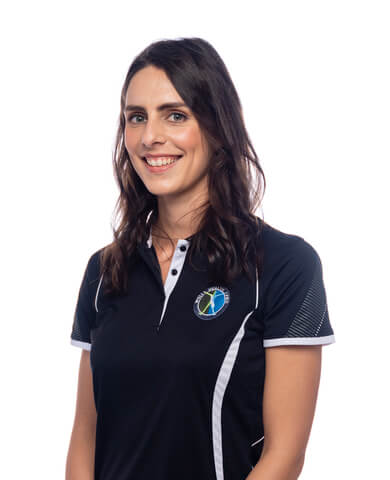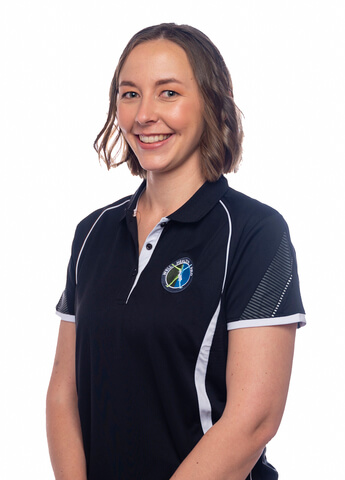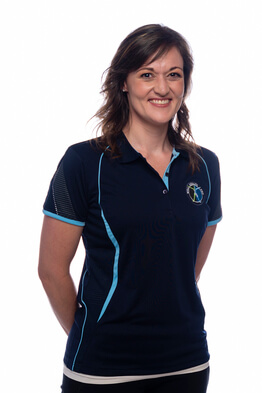Range of movement exercises? Aren’t all exercises equal? The same intensity providing the same benefit? Not at all. Compare a yoga class to lifting weights. All exercises are not equal. Some may say that range of movement exercises are at the bottom of the food chain when it comes to exercise hierarchy, but anyone who has had a cast, moon boot or shoulder sling, will know how vitally important range of movement exercises are. Without full range of movement you cannot build strength, endurance or agility.
What exactly is range of movement?
Range of movement (ROM) is specific to each joint in the body and describes the degrees of motion a joint can move in a certain direction. Joints have different degrees of freedom depending on their shape and function. The knee allows movement in one plane, the bending and straightening you need to kick a ball, while the hip allows movement in three planes, enabling a contortionist to get her leg behind her head. These different directions all have normative values, luckily not based on the contortionist.
Range of movement is assessed with a goniometer, an odd looking protractor. Range of movement is affected with injury. The injury doesn’t have to be of the joint itself to affect its mobility, a lower back disc bulge will affect the hip’s flexion range of movement because of irritation to the sciatic nerve and Achilles tendonitis will affect the ankles dorsiflexion ROM, etc.
Why we use range of movement exercises
When you’re not even achieving the normal Range of movement (ROM), we set out to investigate which structure is limiting motion. When your knee can’t straighten completely, or your elbow is stuck at a certain point, we document and record this in detail to monitor your progress. We test and screen individual structures to find the culprit and focus our treatment to gain some range of movement. ROM is restricted because of:
- inflammation
- pain
- muscle stiffness
- joint dislocation
- fracture
Depending of the structure at fault, we want to each joint to move within it’s normal boundaries. We want a joint that can move freely through full ROM to swing through on the golf course or glide through the pool when you swim laps. You can build strength, endurance, and agility only when normal full ROM is established. Just like you use the whole length of the garden hose, you want the full use of your joints and muscles to move efficiently.
Healing Effects of range of motion exercises
- Ease pain
- Decrease muscle spasm
- Improve blood supply to injured tissue
- Reduce inflammation & swelling
- Increase cellular metabolism
- Break down scar tissue and adhesions
- Prevent contractures
- Increase tissue flexibility
- Stimulate muscle contraction
- Primes muscles for strength exercises
- Facilitates symmetrical movement patterns
- Decrease compensatory patterns
- Increase independence
Range of movement exercises explained
Range of motion exercises improves or maintains the ROM of the joint your physiotherapist is treating. Joint surface, ligamentous stability, muscle tone and strength, and nerve mobility all influences your ROM. Your physiotherapist is able to identify which aspect has an influence on your unique case with a thorough assessment. We address all these contributing factors during your consultation.
ROM exercises target the safe, pain free range of motion initially. This may mean only bending your knee as far as your ranger brace allows after your ACL reconstruction surgery, or adding some overpressure to your movement to encourage greater ROM after your total hip replacement. If you injured your meniscus playing soccer we may focus on bending movement and avoid straightening or hyperextending all the way.
ROM exercises are controlled by you, repeated simple movements, done multiple times a day.
Different types of range of motion exercises
When we assess range of motion we take into account if the active and passive ROM is different. Active ROM is when you move by yourself, and passive ROM is when your physiotherapist does the movement for you. This distinguishes between muscle and joint injuries or pathology.
Passive ROM
With passive ROM your physio does the movement for you in the treatment room in adjunct to joint mobilizations and manual therapy. You may be given passive self stretches to do at home to maintain the ROM we won during your treatment. This is like the long holds of stretches where no movement takes place.
Active ROM
During active ROM exercises, you move your joint yourself and have control over how far you go. We may use “targets” during treatment, like touching your knee to the wall when working on your ankle or reaching your fingertips to a specific point when working on your shoulder.
Active assisted ROM
These exercises fall somewhere in between. After surgery or injury when in a lot of pain, there is also weakness. Your physio assists the movement in the treatment room by supporting the limb we want to move and teaching you how to do the same at home. Like interlacing your fingers to help the injured shoulder reach up with the uninjured side or gently guiding your shin further back to aid your injured knee to bend deeper.
Anatomical changes you’ll notice with range of motion exercises
In essence, we are “oiling the joint” or “getting into gear” with ROM exercises. You will notice more freedom of movement and less pain as you progress through your reps and sets. The joint or limb will feel a little warmer, comparable to normal body temperature, and pink up as you do your range of movement exercises. You may notice swelling coming down and less restriction as you move. Gaining centimeter by centimeter, eventually getting it to your target.
We give you an objective measure for your range of motion exercises, for example when we work to improve ankle dorsiflexion you can place your toes on a wall and aim your knee to touch the wall without your heel lifting. As this improves you will move your toes 1 cm, then 2 cm, etc., away from the wall until you reach your goal.
Changes on a cellular level with range of motion exercises
The benefits of ROM exercises are threefold. We have an effect on the circulation, neuromodulation and connective tissue with very simple movements.
Firstly with movement, we promote circulation. With improved circulation, we encourage oxygenated, nutrient rich blood to the site of the injury. Stagnant, de-oxygenated blood is collected and carried away. This reduces swelling which already makes movement feel easier and less restricted. Movement nourishes joints. Synovial fluid lubricates the joint from the inside out.
Whenever we move the body interprets the movement. “Have I done this before? What was the outcome the last time? What can I expect from this movement?” A lot happens without us having to think about it. Protective patterns are normal during the acute phase of your recovery, like a limp. This gets the load off of the injured leg or ankle while you recuperate. After 2 weeks this movement pattern becomes redundant and unnecessary. When you move safely, without pain, the brain lessens the threat value of the movement. Instead of thinking about the previous time, your ankle rolled inwards and you were injured, the brain interprets the inward movement as safe and comfortable.
Connective tissue is the building block of healing. Scabs, new bone, ligament or muscle fibers, are made by connective tissue in the injured area. These brand new tissues need to be flexible and strong to withstand normal, everyday loads of walking, running or climbing stairs. If you don’t move the limb while it heals, you are at risk of a contracture, which is very strong but unmovable. It prevents you from moving or getting back in the gym because you can’t straighten your arm after your bicep muscle tear.
Passive range of motion feels like:
Your physiotherapist supports and holds the limb and joints in their hands and moves rhythmically through the available ROM for you. Once you relax the limb the movement is comfortable to receive. Most people struggle to relax enough to entrust a limb to their physiotherapist, especially if it is injured. You can rest assured we don’t force any joint into a position of pain, ever.
How long does range of motion exercises take to do?
Range of motion exercises is only a part of your treatment session and rarely done in isolation. Often, your physiotherapist will combine it with soft tissue techniques, electrotherapy or stretching to have a bigger and more prolonged effect. Our consultation times are an hour long. Depending on your unique condition range of motion exercises may take anything from 10 minutes, for an ankle sprain, or 30 minutes for a hip replacement. Once ROM is established we can target specific muscles to strengthen and increase endurance to ultimately get you back to 100%.
How many times should I do my active range of movement exercises?
Your physiotherapist will guide you and give you an exact “dose” of how often and how many of each mobility exercise you should be doing daily. But a general rule thumb is the more, the better. The improvement in range comes from the repetitiveness of the movement, and not with force. Gentle rhythmic gliding and sliding of the joint surfaces is the essence. Range of movement is assessed during each treatment and your exercises are progressed accordingly.
Your physiotherapist will discuss a treatment plan with you, we’ll give you an idea of how long it will take for your condition to improve and how often treatment is needed. Some cases we’ll need 6-8 sessions. Mostly we see you twice during your first week, and once a week for the next two weeks and then once every second week in the next month.
What can I do at home to ensure the effectiveness of mobility exersises?
Unfortunately, the effect of range of movement exercises won’t prove lasting results if you only do them once a week in our treatment room. Your physiotherapist looks at the bigger picture and discuss the possible causes of your pain with you. This may include changing your sleep position or desk setup. For lasting results, it is important to comply with these recommendations and do your mobility exercises as prescribed, diligently. Your physiotherapist will discuss how many repetitions should be done and how many times daily. Think of these exercises as doses of medicine, it can benefit you greatly without – if you do it, or your recovery may lag.
Cost of mobility exercises
There are certain medical aid rates for rehabilitation as a treatment, which range of movement exercises form part of. It is always used as part of a complete treatment consultation and you will never be paying for only range of motion exercises.
Mobility exercises in isolation will not fix your problem. It’s the complete treatment package, which addressed the root cause of your symptoms, that shows the real improvement.
Medical Aid Code – 501
The treatment code 501 is used for rehabilitation during treatment, which includes range of movement exercises. Mobility exercises are rarely done in isolation, but will complement resistance, stability and proprioception training. Most good medical aids offer re-imbursement for range of movement exercises.
Does it make a difference to have an experienced physiotherapist prescribe range of movement exercises?
The experience and skill of your physio make all the difference. Anyone can put a video on YouTube, but will not know where your problem is coming from. You might risk making it even worse if you don’t consider how the different structures are interacting with each other. Muscle strains and tendonitis feels stiff, but stretching can make your problem worse. Taking into account all the factors like healing stage, severity of tissue damage and other components that may influence your injury – dictates this type of treatment.
Our physiotherapists have years of clinical experience and in depth knowledge of your body’s anatomy. They understand different painful conditions and injuries and will know exactly which range of motion exercises are suitable to help you heal quicker.





